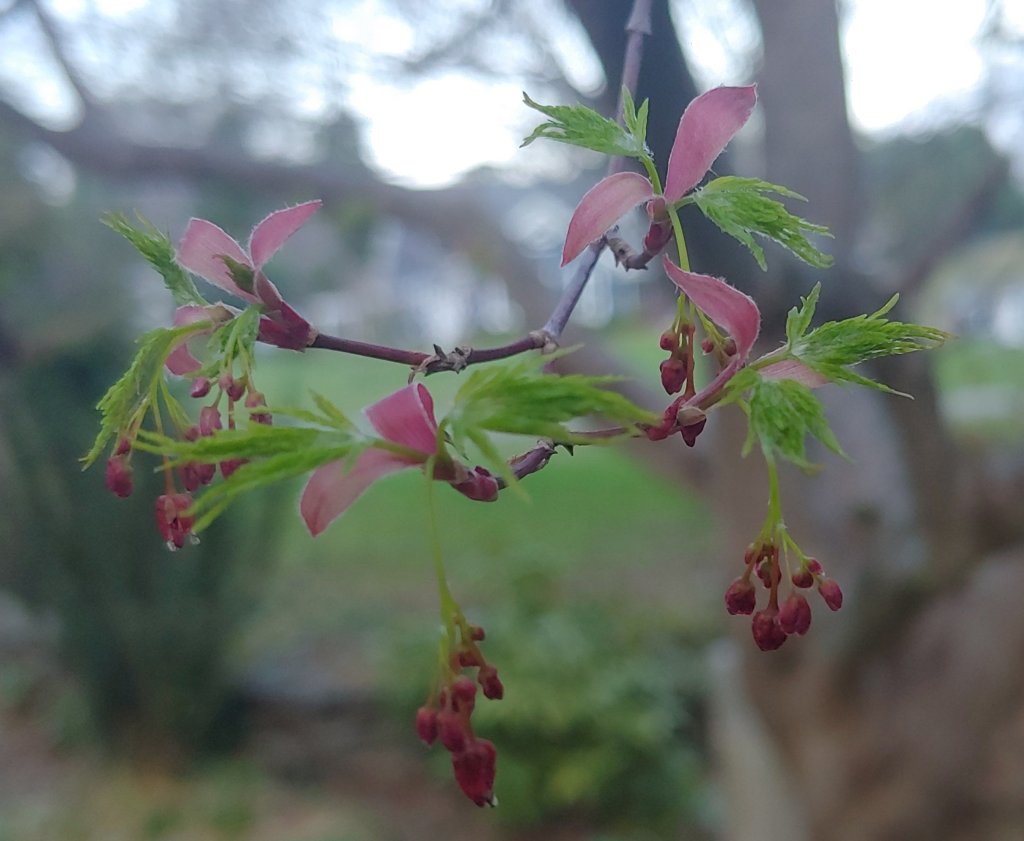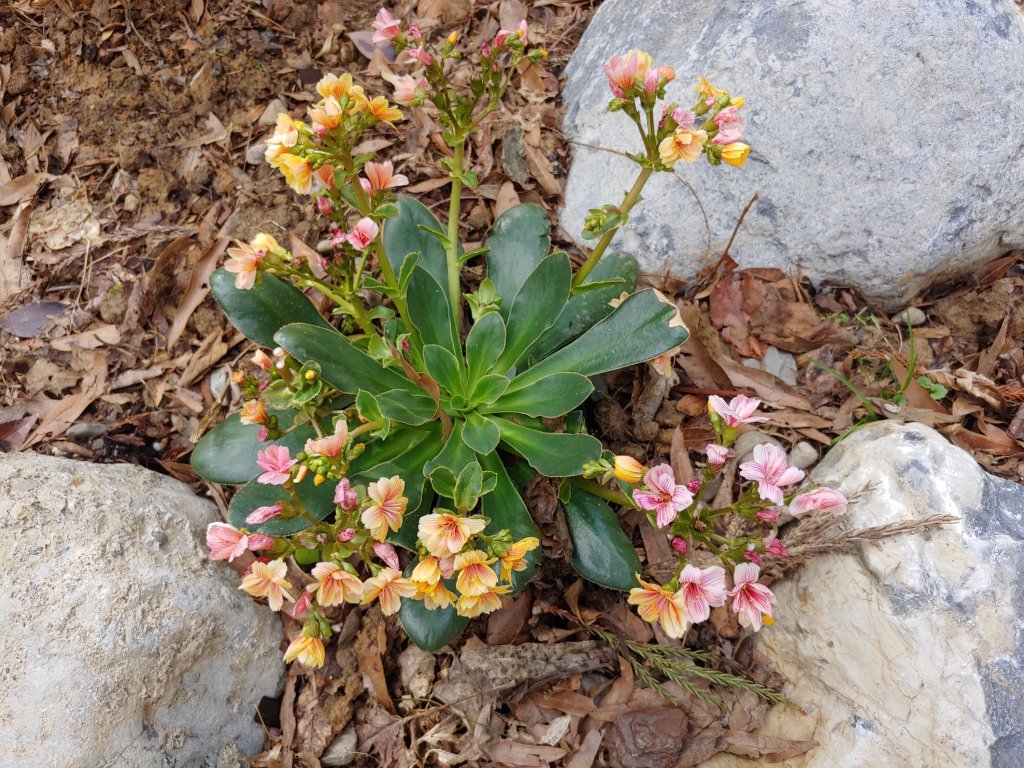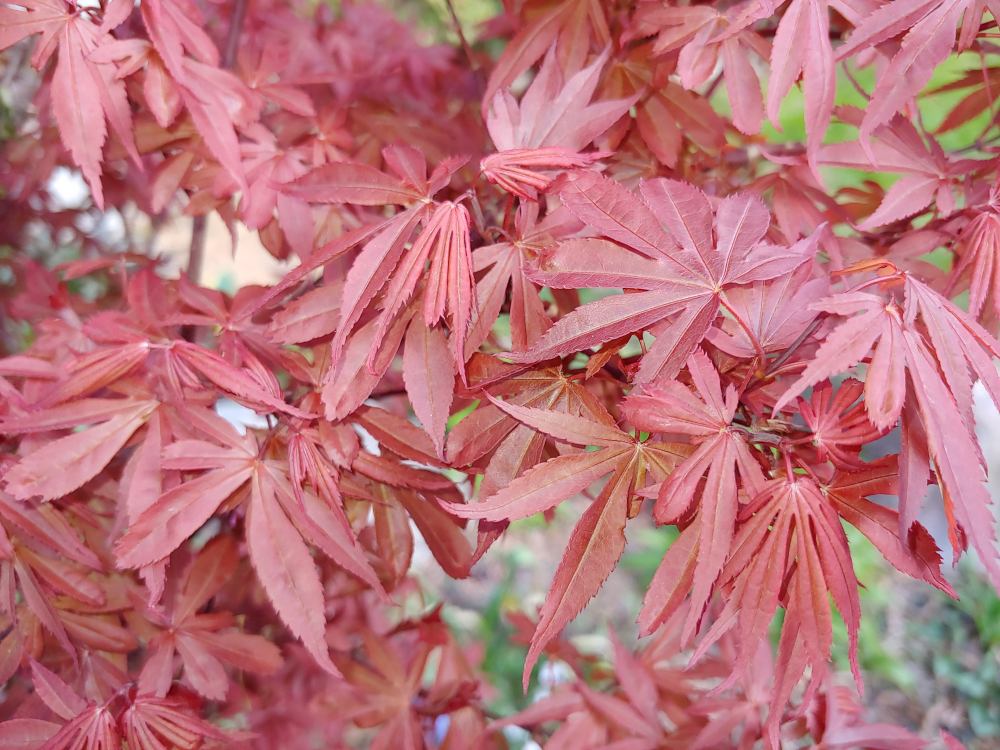There is little reason to fret over minor damage resulting from recent freezes. Yes, flowers of early magnolias and camellias were lost, but that happens most years and blooms were in full, magnificent display for nearly a week. So, why be bothered? Enjoy the garden today, and if one thing or the other goes awry, the best of spring is still to come. While I hesitate to state a preference for one season or part of a season over another, the greening of the garden in early April is a splendid time of the gardener’s year.

But, the garden is not always greening. Reds and yellows of Japanese maples are also on the way, and while a few scattered leaves had emerged days before the freeze, considerable progress has been made since, though temperatures were hardly mild until today. The new leaves of maples are the most brilliantly colorful, but the dangling flowers of the fernleaf maple (Acer japonicum ‘Aconitifolium’, above) are second only to its autumn foliage color in beauty. This is a time when each flower or colorful leaf is closely watched, while the garden’s abundance in a few weeks makes this appreciation more difficult.

Most of the spring clean up has been done, but deep piles of leaves remain in a few areas that must be tidied up. As expected, the weedy area in the lower, rear garden that was turned from lawn to garden has sprouted some weeds and grasses where turf was turned in late autumn. The planting here is coming along, and as they appear I dig out grass and clumps of weeds and strip the soil before discarding the weed. It’s likely I’ll fight this through the spring, but I’m quite happy with the plantings’ progress so far. Plants will be a bit small this year, and probably it will be several before it’s filled in, but it’s a good start and I’m overjoyed to be rid of this damp, weedy area of lawn.

A single lewisia (above) is planted here between stones in a mix of soil, pine bark, and crushed stone. This should be adequate drainage. Others have been lost with less careful planting, and if successful I hope to obtain several others to plant between stones that border this planting area. On the other side of the planting area more sun tolerant succulents will be planted between stones, and perhaps these will hardly be seen once all else grows in.

It seems that I am onto a bit of a columnar plant kick. The addition of a narrow, upright Japanese maple (Acer palmatum ‘Twombley’s Red Sentinel’, above), and several columnar boxwoods inspired recent plantings of a ‘Red Obelisk’ beech and ‘Cuppresina’ spruce, but the narrow trees are practical choices where space is limited. Perhaps there are now too many vertical accents for good design, but excesses are little concern in this garden.
On fastigiate plants, don’t you have Tokyo Tower?
Tokyo Tower and Persian Spire parrotia also, and probably a few more columnars that I’ve forgotten.
Love, love, love your Japanese Maple. I really want one for my treeless front yard.
Most Japanese maples are tough and easy to grow. It is important to measure your space and research the maple you’re buying to be certain it won’t overgrow. I’m up to about forty Japanese maples and many can grow quite large.